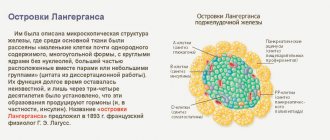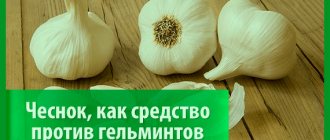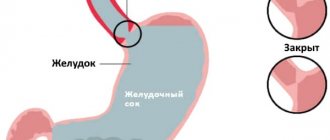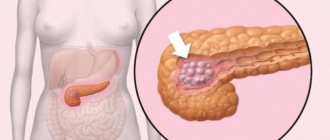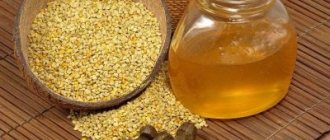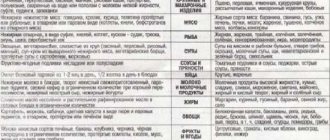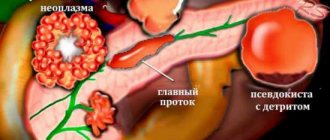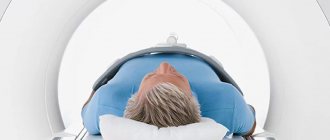What is pancreatitis of the pancreas, its signs
Pancreatitis is an inflammatory-degenerative process in the pancreas. Every year the number of people suffering from this disease is growing. Treatment and symptoms of the disease depend on the severity of inflammation and the degree of damage to the pancreas.
The following processes of inflammation of the pancreas are distinguished:
- Acute process. It appears suddenly and requires emergency hospitalization of the patient.
- Chronic process. Its development is most often the result of an acute form.
Increased echogenicity of the pancreas occurs with pancreatitis - Cyst. It appears as a result of inflammatory-destructive processes.
- Pseudocyst is a consequence of a chronic or acute process. It is characterized by the accumulation of large amounts of pancreatic juice near fibrous tissue.
- Steatorrhea. Appears due to chronic gland disease and causes intestinal dysfunction.
In pancreatitis, the causes of inflammation are factors such as:
- Gallbladder disease . This is the main cause of pancreatic disease, since with hypertension in the biliary tract and its reflux, chemical inappropriate processes occur in the pancreas. Damage to blood vessels in the body occurs and swelling is created.
- Stomach diseases. Gastritis and ulcers weaken the functioning of the duodenum. As a result, the process of normal bile release is disrupted. The gland is damaged by its own enzymes, which stagnate in the ducts.
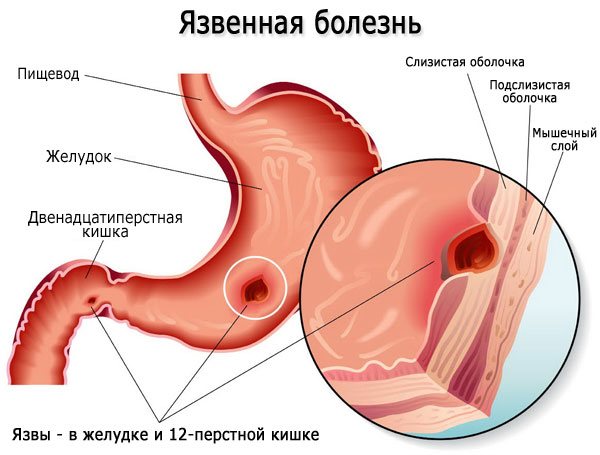
Peptic ulcer is the most common gastrointestinal disease - Diabetes. With this disease, blood circulation in the organ is disrupted, which causes pancreatitis.
- Alcohol and food poisoning.
The disease is also accompanied by the following symptoms:
- severe pain under the left rib;
- vomit;
- high body temperature;
- white coating on the tongue;
- headache;
- high blood pressure.
If you have the above symptoms, you should not hesitate; you should immediately call an ambulance.
| View | Description |
| Colic | Acute pain in the first 2 days has a girdling character in the upper abdomen. |
| Vomit | In the acute course of the disease, it is painful and repeated. May appear along with colic or in later stages. |
| Bloating | The abdomen is inflated, and severe pain appears on palpation. |
| Skin color changes | Pallor and cyanosis of the skin may appear. |
| Breathing problems | The respiratory rate is disrupted due to the loss of electrolytes in the blood during vomiting. A yellow coating appears on the tongue. |
Complications
In addition to side effects, the patient may experience complications. This, in turn, depends on incorrectly prescribed treatment and non-compliance with the dosage.
Complications:
- Pylephlebitis.
- Abdominal abscess.
- Parapancreatitis.
- Purulent complications.
- Arrosive bleeding.
So, we can conclude that there are many medications, the most effective ones are given.
Every patient should understand that the same medicine may not be suitable for two different people. Also read: Antibiotics for pancreatitis in adults, for acute, for exacerbation of chronic
Therefore, you should not self-medicate; it is better to consult a doctor. Indeed, with untimely and illiterate treatment, serious complications can arise.
Diagnostics
Diagnosis of pancreatitis is a complex and multi-stage process, which includes collecting complaints and conducting laboratory tests. Such a variety of diagnostic methods is necessary in order to make an accurate diagnosis. After all, pancreatitis can occur under the guise of diseases of other organs. Therefore, a comprehensive examination of the patient is required.
Instrumental diagnostics
This examination is prescribed to all patients with pancreatitis of the pancreas.

Ultrasound is a high-quality and highly informative study. All other research methods are not highly effective.
Computer diagnostics
This study is often prescribed when complications occur. X-rays allow you to examine the organ in detail, assess the extent of its damage and determine the amount of healthy and fatty tissue.
ERCP
An endoscopic examination is carried out using a special probe, which is inserted into the main duct and an x-ray is taken. With the help of such an examination, the patency of the ducts is assessed. During the examination, small stones that are excreted naturally can be removed. This method is minimally invasive, which is why many people prefer it.
Indications for use
Contrical is allowed to be used only under the supervision of a physician. The drug is recommended for:
- acute phase of pancreatitis;
- chronic pancreatitis with a tendency to relapse;
- pancreatic necrosis;
- traumatic, burn, hemorrhagic or toxic shock;
- pancreatic surgery;
- extensive internal bleeding;
- Quincke's edema;
- traumatic injuries of soft tissues;
- postoperative mumps.
In acute or chronic pancreatitis, the drug is capable of:
- restore fibrin fibers of tissues;
- counteract the decomposition of proteins;
- normalize metabolic processes in tissues.
Proper diet after removal of the gallbladder and pancreas for pancreatitis
Contrical can be used as a prophylactic agent. It prevents complications after surgery on the pancreas and organs located in close proximity. The medicine is prescribed even to newborn children, the main thing is to choose the exact dosage. The main task of the drug is to inhibit enzymes by forming protein spatial structures. The active substance is partially metabolized in the gastrointestinal tract; after 10 hours, most of the drug is excreted in the urine, without accumulating in the liver or kidneys.
ul
Classification of drugs
In medicine, there are several groups of drugs for the treatment of the pancreas:
N-2 blockers
The activity of this group of drugs is aimed at counteracting gastric secretion. Such agents block H-2 receptors, suppress the formation of hydrochloric acid, relieve irritation of gastritis and acetylcholine.
Anticholinergics
A group of drugs helps eliminate pancreatitis. They facilitate the action of acetylcholine. If the disease is already chronic, then it needs to be treated with m-anticholinergic drugs.
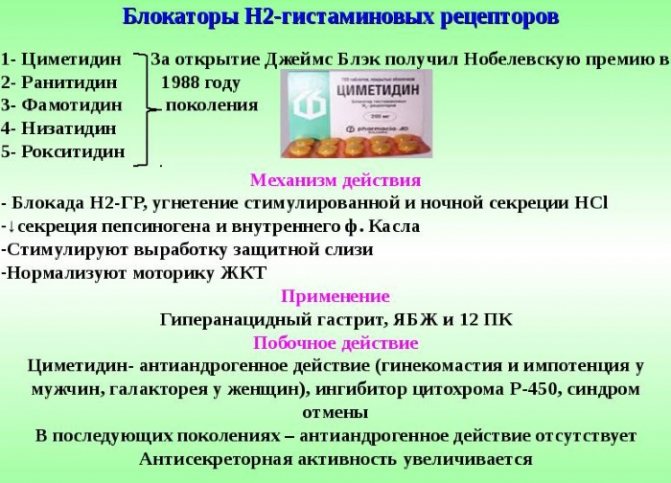
Drugs in this group block pathological impulses in the nerves and cerebral cortex.
Antacids
Antacids are medications whose action is aimed at removing hydrochloric acid. They are prescribed to patients who have high stomach acidity. When the formation of hydrochloric acid is high, the products produce a pancreatic enzyme. These drugs reduce the secretory function of the stomach.
Antispasmodics
Medicines that eliminate spasms are used in cases of impaired motor function of the gastrointestinal tract. Such failures appear due to a decrease in the tone of the sphincter of the pancreatic duct.
Enzymes
Enzymes include protease, amylase, and lipase, which are needed to break down food. They support the proper functioning of the pancreas, normalize digestion and stimulate the digestion of proteins and carbohydrates.
Drug analogues
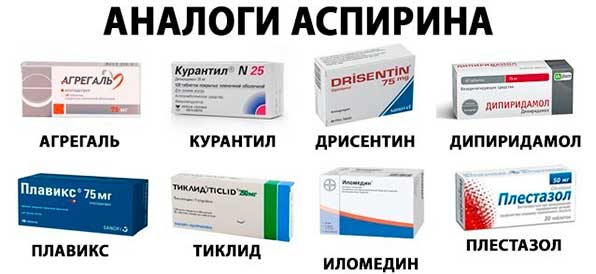
Complete analogues of Aspirin include the following drugs:
- Asafen.
- Aspeter.
- Upsarin Upsa.
- Acetylsalicylic acid.
These medications have the same composition and are characterized by an identical mechanism of action.
Alka-Seltzer is considered a good analogue of Aspirin. In addition to its anti-inflammatory, antipyretic and analgesic effects, the drug reduces the acidity of gastric juice, which will more effectively help stop the inflammatory process in pancreatitis, which is accompanied by high acidity.
Top 10 drugs from the pharmacy
Medicines for pancreatitis of the pancreas make the patient feel better and prevent the development of adverse consequences.
Mezim
Mezim is a digestive enzyme agent that replenishes their deficiency and has a lipolytic effect. The drug contains enzymes amylase, protease, lipase, which normalize the digestive process and improve fat absorption.

Medicines for pancreatitis of the pancreas of the Mezim type contain the pancreatic enzyme - pankeratin
Enzymes have a compensating effect and replenish the pancreas’s own enzymes. The product provides lipolytic and pharmacological effects. Trypsin, which is part of the composition, suppresses the secretion of the pancreas. Maximum activity is observed 30 minutes after using the drug.
Indications:
- chronic intestinal diseases;
- chronic pancreatitis;
- intestinal infections;
- frequent consumption of fatty foods;
- preparation for ultrasound of the gastrointestinal tract.
The drug is prescribed before meals, the dosage depends on the age of the patient. The usual dose is 1-2 tablets Mezim 10,000. For adults, the average dosage is 150,000 units/day. The course of therapy lasts from several days to several months.
Contraindications:
- allergy to substances in the product;
- acute pancreatitis;
- exacerbation of chronic pancreatitis.
The product is available without a doctor's prescription, costs from 80 rubles.
Maalox
An antacid drug containing magnesium hydroxide and algeldrate. The product is produced in chewable tablets and suspension for oral administration. The active ingredients of the drug are considered antacids and are almost not absorbed during use and do not have systemic effects.
The medicine has an enveloping effect, due to which the effect of damaging factors on the lining of the stomach and esophagus is reduced.
Indications:
- stomach ulcer;
- chronic gastroduodenitis;
- hiatal hernia;
- dyspeptic phenomena.
Contraindications:
- age up to 15 years;
- intolerance to maltitol;
- allergy to drug substances;
- hypophosphatemia.
The drug is prescribed 2 tablets 3 times a day 3 hours after meals. The course of therapy should not exceed 2 months. The product is sold without a prescription and its price starts from 125 rubles.
Meteospasmil
Combination medicine for the treatment of gastrointestinal disorders. Its active ingredient alverine reduces the high tone of intestinal smooth muscles at the cellular level and relieves muscle spasms.
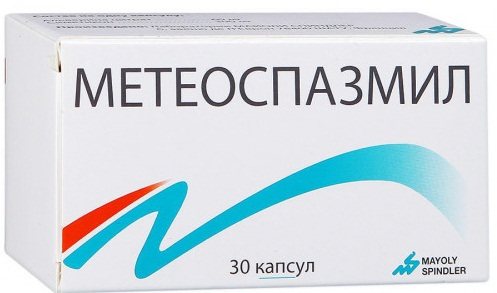
Simethicone, which is part of the product, reduces gas formation in the intestines and protects the walls of the gastrointestinal tract with a film. The drug Meteospasmil is used for the symptomatic treatment of intestinal disorders that are manifested by flatulence. The product is used orally, 1 capsule 2 or 3 times a day. The duration of therapy is determined by the doctor individually.
Contraindications:
- allergy to the active ingredients of the product;
- intestinal obstruction;
- gastrointestinal diseases.
The product is sold in pharmacies without a doctor's prescription and costs from 440 rubles.
Baralgin
Medicines for pancreatitis of the pancreas, such as Baralgin, are an antipyretic and analgesic and belong to the group of non-steroidal drugs. The medication is produced in tablets and its main active ingredient is metamizole sodium.
The product also contains additional substances: magnesium stearate and macrogol. The product has an anti-inflammatory and antipyretic effect. The drug is quickly absorbed from the gastrointestinal tract and dissolves in the liver to a metabolite. The drug is excreted by the kidneys.
Indications:
- mild pain of various origins;
- pain after diagnosis;
- fever;
- spasm.
Contraindications:
- bronchial asthma;
- hepatic porphyria;
- age up to 15 years;
- allergy to substances in the product;
- pregnancy.
The daily dosage for adults is 1-2 tablets 2-3 times a day. The duration of treatment should be no more than 3-5 days. The drug is available with a prescription, and its price starts from 190 rubles.
Movalis
The medicine for pancreatitis Movalis has an analgesic and anti-inflammatory effect in the treatment of the pancreas. The drug is produced in tablets, suspensions, and rectal suppositories. The product contains meloxicam, magnesium stearate, lactose monohydrate.
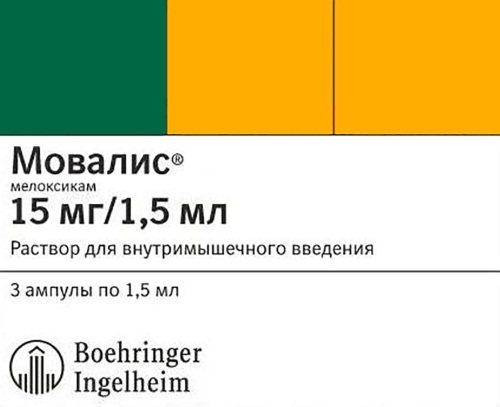
Indications:
- rheumatoid arthritis;
- osteoarthritis;
- ankylosing sponzilitis.
Contraindications:
- bronchial asthma;
- active gastrointestinal bleeding;
- liver failure;
- age up to 12 years;
- pregnancy.
The drug is best taken before eating. The drug is prescribed 1 pc. 1 time per day. The medicine is sold by prescription and its price starts from 600 rubles.
Indomethacin
An anti-inflammatory non-steroidal drug with an antipyretic effect. The product is produced in the form of tablets, suspensions, rectal suppositories, ointments, and gels. The active substance of the drug is indomethacin, additional potato starch, propylene glycol, povidone.
Indications:
- articular syndrome;
- osteochondrosis;
- rheumatism;
- inflammation in soft tissues.
Contraindications:
- exacerbation of gastrointestinal inflammation;
- hypocoagulation;
- pregnancy;
- age up to 14 years;
- allergy to the drug.
The drug is prescribed after meals, 2-3 tablets 3 times a day for 4 weeks. The medication is available with a prescription, and its cost is from 95 rubles.
Cerucal
An antiemetic drug containing the active substance metoclopramide hydrochloride. The product reduces nausea and stimulates the digestive tract.
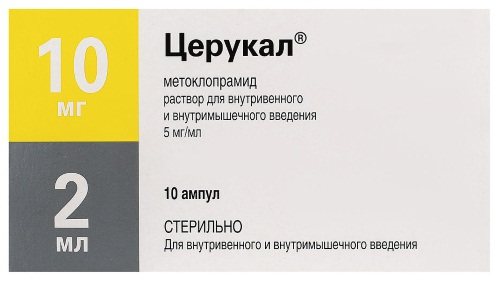
Indications:
- nausea;
- gagging;
- hiccups;
- gallbladder disease.
Contraindications:
- intestinal obstruction;
- bleeding from the gastrointestinal tract;
- lactation;
- pregnancy;
- gastric perforation.
The medication is taken 10 mg 3-4 times a day. Cerucal is sold without a prescription and costs from 240 rubles.
Metoclopromide
Medicines for pancreatitis include antiemetics such as metoclopromide. They are used for vomiting of various origins. The medication eliminates hiccups and nausea, regulates the functions of the gastrointestinal tract, and enhances its motor activity.
After using the medicine, the secretion of bile is normalized, ulcers in the stomach and duodenum heal. The drug stimulates the production of prolactin and is quickly absorbed from the stomach. It begins its action after 3 minutes. Produced in tablets, suspension for children and solution for injections.
Indications:
- radiation therapy;
- liver diseases;
- traumatic brain injuries;
- errors in nutrition.
Contraindications:
- allergy to substances in the product;
- epilepsy;
- intestinal colic;
- pyloric stenosis;
- age up to 2 years;
- pregnancy.
The drug is used 30 minutes before meals, 10 mg 3-4 times a day. Duration of treatment is 4 weeks. The product is sold in pharmacies with a prescription and its price starts from 149 rubles.
Polysorb
Polysorb is a multifunctional intensive sorbent. It is universal as it binds and removes harmful toxins from the human body.
The product has a large sorption capacity, due to which it binds 3 times more toxins. It is used as a complex therapy for almost any pathology.
The medicine is produced in powder for making a suspension. Its active component is colloidal silicon dioxide.
Indications:
- any intoxication;
- poisoning;
- allergy.
To make the medicine, you need to shake the required amount of powder in 100 ml of water and drink quickly. Adults should take 6-12 g of powder.
Contraindications:
- ulcer;
- stomach bleeding;
- intolerance to Polysorb.
The product is sold without a prescription and its price starts from 110 rubles.
Regidron
Medicines for pancreatitis of the pancreas, such as Regidron, have rehydration and detoxification effects. The drug is produced in powder for the preparation of a suspension. Includes active substances: Dextrose, sodium chloride, sodium citrate.
Indications:
- correction of acidosis;
- prevention of water-electrolyte imbalance;
- rehydration therapy for diarrhea.
Contraindications:
- unconscious state;
- kidney dysfunction;
- diabetes;
- allergy to substances in the product.
The contents of 1 package are filled with 1 tbsp. boiled water and drink every 5 minutes, once a day. The product is sold in pharmacies without a prescription and its price starts from 400 rubles.
Pharmacological properties of Aspirin
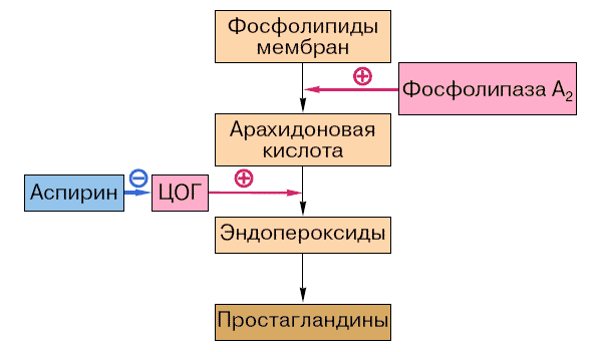
Once in the body, Aspirin irreversibly deactivates cyclooxygenase enzymes, which are important in the production of prostaglandins. The product also:
- Reduces the amount of endoperoxides.
- Reduces bradykinin levels.
- Reduces the number of free radicals.
- Inhibits lipid oxidation.
- Increases the threshold of pain sensitivity located in the thalamic centers.
- Increases heat transfer from the body.
In view of this effect on the body, we can summarize that the drug acts in three directions:
| Analgesic | Antipyretic | Anti-inflammatory |
| Reduces the severity of pain of various nature (headache, dental pain, gastrointestinal pain, etc.). | By increasing the degree of heat transfer, Aspirin effectively helps reduce body temperature. Basically, this property of the drug is explained by its ability to deactivate cyclooxygenases. | It relieves inflammatory processes of both acute and long-term nature, and is also successfully used to treat rheumatoid arthritis. |
The medication prevents the risk of blood clots and is successfully used to treat heart attacks and strokes.
It has been scientifically proven that the medicine:
- Increases the chances of life and full recovery in people who have suffered a heart attack or stroke.
- Reduces the risk of stroke recurrence.
- Reduces the risk of mortality regarding all heart and vascular diseases.
The drug is believed to significantly reduce the risk of developing cancer cells and cancer mortality.
Compound
The active element of the drug is acetylsalicylic acid. The pill contains 500 mg. element. Complementary components:
- cellulose in powder form;
- corn starch.
Cost and release form
The medicine is produced as tablets. The color is white, the design is round, and they have no smell.
The price of a plate of 10 pills with a dosage of 500 mg averages 6-10 rubles.
Traditional methods
Treatment with traditional methods is more effective and safer than using homeopathy. The recipes are easy to prepare. The following are traditional methods of treating the pancreas:
Carrot and potato juice
For cooking you will need 2 potatoes and 1 carrot. Pass the vegetables together with the peel through a meat grinder and squeeze out the juice. It's easier to use a juicer. You should get 1 tbsp. liquids. Use half an hour before meals. You need to drink juice 7 days before meals. Take a break for a week and repeat the procedure. This way you can relieve an attack of pancreatitis and normalize digestion.
Royal jelly
The delicate bee product tastes sour and pungent. This is a unique elixir containing the necessary substances for humans: minerals, acids, nutrients.
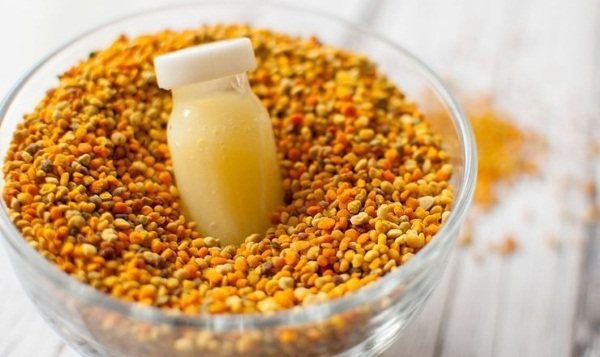
The product contains substances that normalize the functioning of the pancreas. The best way to use the product is to dissolve in the mouth. You should use no more than 100 g of product per day, and preferably 1 tbsp. l 3 times a day. The course of therapy is 12 weeks, after which you need to take a break of 4 weeks.
Herbal infusion
To prepare you will need to mix:
- burdock root;
- St. John's wort;
- elecampane;
- wormwood;
- calendula;
- horsetail;
- series;
- sage;
- swamp cudweed.
12 g of the mixture is poured with boiling water and left for 1 hour. You need to use 1/3 tbsp in case of exacerbation of the pancreas. 3 times a day on an empty stomach.
To successfully treat the pancreas, you do not need to use medications on your own. After all, pancreatitis falls within the competence of a number of specialists and requires examination from everyone.
Article design: Vladimir the Great
Antispasmodic injections

The use of antispasmodic injections for acute pancreatitis is due not only to their analgesic effect. They also help relax the muscles of the internal organs. Timely administration of antispasmodics reduces the risk of necrosis. More often the patient is prescribed injections:
- platiphylline;
- Odeston;
- metacin;
- atropine;
- no-shpy;
- paparvina.
Relaxation of the sphincter of the hepatic-pancreatic ampulla is facilitated by the administration of Nitroglycerin injections.
Treatment with analgesic injections
Exacerbation of the pathology involves the prescription of Paracetamol, Baralgin, Analgin. These injections help relieve spasms from the ducts of the organ and remove juice to the duodenum.
These drugs are combined with antihistamines. The use of Diphenhydramine, Suprastin, Tavegil is recommended. They have a sedative and antiemetic effect.
In order to relieve pain and reduce organ secretion, the patient is prescribed Sandostatin injections. The drug is administered subcutaneously, no more than 3 times/24 hours. If the patient suffers from unbearable pain, he is prescribed the use of Tramadol or Promedol. These drugs have a narcotic effect. The duration of therapy is 3 days.

